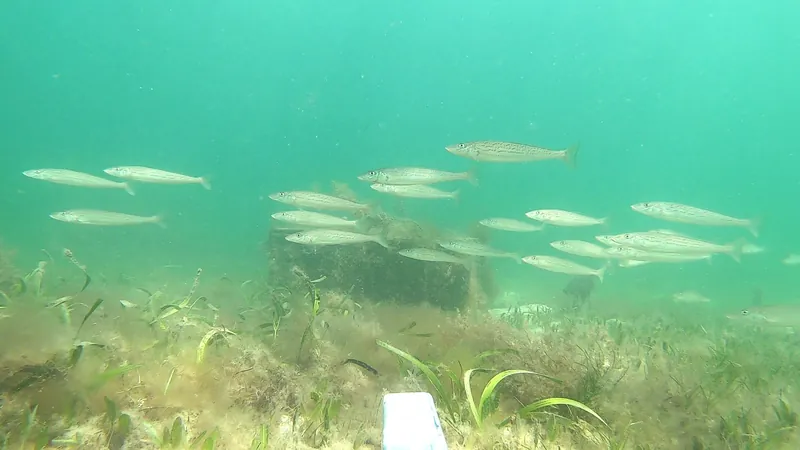
Urgent Calls for Research to Preserve Australia’s Depleted Shellfish Reefs and Their Fish Populations
2024-11-20
Author: Yu
In a groundbreaking study, researchers from Flinders University have revealed that Australia’s shellfish reef restoration projects are crucial to recovering degraded coastal ecosystems and enhancing habitats for various fish species. However, significant gaps in research persist that must be addressed to ensure the success and longevity of these initiatives.
Shellfish reefs, which include oysters, mussels, and razor clams, play a vital role in maintaining marine biodiversity. Bradley Martin, a Ph.D. candidate at Flinders University, spearheaded a comprehensive review published in Restoration Ecology, which examined over 110 global studies on these unique ecosystems. “This synthesis of research clearly indicates a lack of data on shellfish reef fishes,” Martin highlighted, emphasizing the need for targeted conservation strategies.
The alarming statistics reveal a critical situation: more than 85% of the world’s oyster reefs have been lost, with Australia suffering over a 90% decline. Such degradation adversely affects numerous fish species that depend on these reefs, many of which hold recreational and cultural significance. These findings underline the necessity of monitoring and understanding fish populations associated with shellfish reefs to enhance conservation efforts.
The team at Flinders University meticulously reviewed 116 peer-reviewed studies drawn from 16 countries, with 23 focusing on reef-forming shellfish and 26 examining various fish monitoring methodologies. Surprisingly, 67% of the research originated from the United States, predominantly centered on oyster reefs, leaving a substantial knowledge gap in other regions, particularly southern Australia.
Shellfish reefs are not just a feast for the ocean; they serve as critical habitats for a diverse array of fish species, such as whiting, snapper, and bream, which are economically and culturally important to the region. In a related study published in the Journal of Applied Ecology, Flinders researchers estimated that restored shellfish reefs in Australia yield an impressive 6,186 kilograms of fish per hectare annually, with fisheries species constituting 98% of this production. This indicates a significant opportunity for both conservation and fisheries enhancement.
To measure fish populations, researchers employed advanced stereo-video cameras and artificial intelligence software, collected during the implementation of The Nature Conservancy’s Reef Builder program. Furthermore, exciting new findings have emerged from recent research indicating that artificial razors clams placed in locations like the Port River can swiftly boost local biodiversity, benefiting species such as gobies, shrimps, and juvenile blue swimmer crabs.
Dr. Ryan Baring, a coastal and marine lecturer at Flinders University, has pointed out that much of the existing research is focused on North America, with a conspicuous lack of studies in tropical regions and across non-oyster reef types, such as mussel and pinnid reefs. This is crucial, as diverse monitoring methods, ranging from underwater video to various nets and traps, often overlook essential data about specific reef types and environmental conditions.
As the world grapples with the impact of climate change and human activities on marine environments, the need for enhanced research on shellfish reefs and their fish inhabitants has never been more pressing. Flinders University researchers, alongside global collaborators, are committed to advancing understanding and monitoring techniques that will bolster the conservation and restoration of these vital coastal ecosystems.
Stay tuned: Could the revival of shellfish reefs hold the key to saving our fish populations? The answer lies in more robust research and collective action to protect our oceans!




 Brasil (PT)
Brasil (PT)
 Canada (EN)
Canada (EN)
 Chile (ES)
Chile (ES)
 España (ES)
España (ES)
 France (FR)
France (FR)
 Hong Kong (EN)
Hong Kong (EN)
 Italia (IT)
Italia (IT)
 日本 (JA)
日本 (JA)
 Magyarország (HU)
Magyarország (HU)
 Norge (NO)
Norge (NO)
 Polska (PL)
Polska (PL)
 Schweiz (DE)
Schweiz (DE)
 Singapore (EN)
Singapore (EN)
 Sverige (SV)
Sverige (SV)
 Suomi (FI)
Suomi (FI)
 Türkiye (TR)
Türkiye (TR)